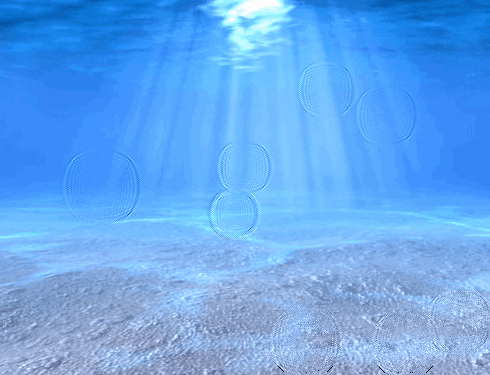Heim >Web-Frontend >H5-Tutorial >Verwenden Sie HTML5 Canvas, um einen Wasserwelleneffekt zu erstellen, der ausgelöst wird, wenn Sie auf die Tutorial-Fähigkeiten picture_html5 klicken
Verwenden Sie HTML5 Canvas, um einen Wasserwelleneffekt zu erstellen, der ausgelöst wird, wenn Sie auf die Tutorial-Fähigkeiten picture_html5 klicken
- WBOYWBOYWBOYWBOYWBOYWBOYWBOYWBOYWBOYWBOYWBOYWBOYWBOriginal
- 2016-05-16 15:47:292358Durchsuche
Heute teilen wir weiterhin Beispiele für in JavaScript implementierte Effekte. In diesem Artikel wird die Verwendung von JavaScript zur Erzielung des Wasserwelleneffekts vorgestellt. Der Wasserwelleneffekt nutzt das Bild als Hintergrund und wird durch Klicken auf eine beliebige Stelle im Bild ausgelöst. Manchmal können wir mit einfachem Javascript eine interessante Lösung erstellen. 
Quellcode-Download
Schritt 1. HTML
Wie zuvor ist der erste der HTML-Code:
Code kopieren
Der Code lautet wie folgt:;
< ;head>
;body>
Wassertropfeneffekt
Canvas id="water ">HTML5-kompatibler Browser erforderlichSchritt 2. CSS
Dies ist der verwendete CSS-Code:
Code kopieren
Der Code lautet wie folgt:
body{background:#eee;margin:0;padding:0} .example{background:#FFF;width:600px;border:1px #000 solid;margin:20px auto;padding:15px;-moz-border-radius: 3px;-webkit-border-radius: 3px} #water {
width:500px;
height:400px ;
display: block ;
cursor:pointer;
#switcher {
Das Folgende ist der Haupt-JavaScript-Code: overflow:hidden; 🎜>margin:15px; #switcher img { width:160px; height:120px; JS
Kopieren Sie den Code
Der Code lautet wie folgt:
function drop(x, y, damping, shading, refraction, ctx, screenWidth, screenHeight){
this.x = x;
this.y = y;
this.shading = Schattierung;
this.refraction = Brechung;
this.bufferSize = this.x * this.y;
this.damping = Dämpfung;
this.background = ctx.getImageData(0, 0, screenWidth, screenHeight).data;
this.imageData = ctx.getImageData(0, 0, screenWidth, screenHeight);
this.buffer1 = [];
this.buffer2 = [];
for (var i = 0; i < this.bufferSize; i ){
this.buffer1.push(0);
this.buffer2.push(0);
}
this.update = function(){
for (var i = this.x 1, x = 1; i < this.bufferSize - this.x; i , x ){
if ((x < this.x)){
this.buffer2[i] = ((this.buffer1[i - 1] this.buffer1[i 1] this.buffer1[i - this.x] this.buffer1[i this.x]) / 2) - this.buffer2[i];
this.buffer2[i] *= this.damping;
} sonst x = 0;
}
var temp = this.buffer1;
this.buffer1 = this.buffer2;
this.buffer2 = temp;
}
this.draw = function(ctx){
var imageDataArray = this.imageData.data;
for (var i = this.x 1, index = (this.x 1) * 4; i < this.bufferSize - (1 this.x); i , index = 4){
var xOffset = ~~(this.buffer1[i - 1] - this.buffer1[i 1]);
var yOffset = ~~(this.buffer1[i - this.x] - this.buffer1[i this.x]);
var Shade = xOffset * this.shading;
var Textur = Index (xOffset * this.refraction yOffset * this.refraction * this.x) * 4;
imageDataArray[index] = this.background[texture] Shade;
imageDataArray[index 1] = this.background[texture 1] Shade;
imageDataArray[index 2] = 50 this.background[texture 2] Shade;
}
ctx.putImageData(this.imageData, 0, 0);
}
}
var fps = 0;
var watereff = {
// Variablen
timeStep: 20,
Brechungen: 2,
Shading: 3,
Dämpfung: 0,99,
screenWidth: 500,
screenHeight: 400,
pond: null,
textureImg: null,
interval: null,
backgroundURL: 'data_images/underwater1.jpg',
// Initialisierung
init: function() {
var canvas = document.getElementById('water');
if (canvas.getContext){
// fps countrt
fps = 0;
setInterval(function() {
document.getElementById('fps').innerHTML = fps / 2 ' FPS';
fps = 0;
}, 2000);
canvas.onmousedown = function(e) {
var mouse = watereff.getMousePosition(e).sub(new vector2d(canvas.offsetLeft, canvas.offsetTop));
watereff.pond.buffer1[mouse.y * watereff.pond.x mouse.x ] = 200;
}
canvas.onmouseup = function(e) {
canvas.onmousemove = null;
}
canvas.width = this.screenWidth;
canvas.height = this.screenHeight;
this.textureImg = new Image(256, 256);
this.textureImg.src = this.backgroundURL;
canvas.getContext('2d').drawImage(this.textureImg, 0, 0);
this.pond = new drop(
this.screenWidth,
this.screenHeight,
this.damping,
this.shading,
this.refractions,
canvas. getContext('2d'),
this.screenWidth, this.screenHeight
);
if (this.interval != null){
clearInterval(this.interval);
}
this.interval = setInterval(watereff.run, this.timeStep);
}
},
// Bild ändern func
changePicture : function(url){
this.backgroundURL = url;
this.init();
},
// Mausposition abrufen func
getMousePosition : function(e){
if (!e){
var e = window.event;
}
if (e.pageX || e.pageY){
return new vector2d(e.pageX, e.pageY);
} else if (e.clientX || e.clientY){
return new vector2d(e.clientX, e.clientY);
}
},
// Schleifenzeichnung
run : function(){
var ctx = document.getElementById('water').getContext('2d');
watereff.pond.update();
watereff.pond.draw(ctx);
fps ;
}
}
window.onload = function(){
watereff.init();
}
正如你所看到的, verwenden Sie Vector2D und verwenden Sie vector2d.js方法是使用纯数学实现,感兴趣的可以自己实验一下.
Stellungnahme:
Der Inhalt dieses Artikels wird freiwillig von Internetnutzern beigesteuert und das Urheberrecht liegt beim ursprünglichen Autor. Diese Website übernimmt keine entsprechende rechtliche Verantwortung. Wenn Sie Inhalte finden, bei denen der Verdacht eines Plagiats oder einer Rechtsverletzung besteht, wenden Sie sich bitte an admin@php.cn
Vorheriger Artikel:HTML5-Update-Bildfarbe, Beispielcode_html5-Tutorial-FähigkeitenNächster Artikel:HTML5-Update-Bildfarbe, Beispielcode_html5-Tutorial-Fähigkeiten
In Verbindung stehende Artikel
Mehr sehen- Das Vollbild-Bildlauf-Plug-in AlloyTouch erstellt in 30 Sekunden eine flüssige H5-Seite
- Tatsächlicher HTML5-Kampf und Analyse von Touch-Ereignissen (Touchstart, Touchmove und Touchend)
- Ausführliche Erläuterung der Beispiele für Bildzeichnungen in HTML5 Canvas 9
- Reguläre Ausdrücke und neue HTML5-Elemente
- So kombinieren Sie NodeJS und HTML5, um mehrere Dateien per Drag-and-Drop auf den Server hochzuladen

